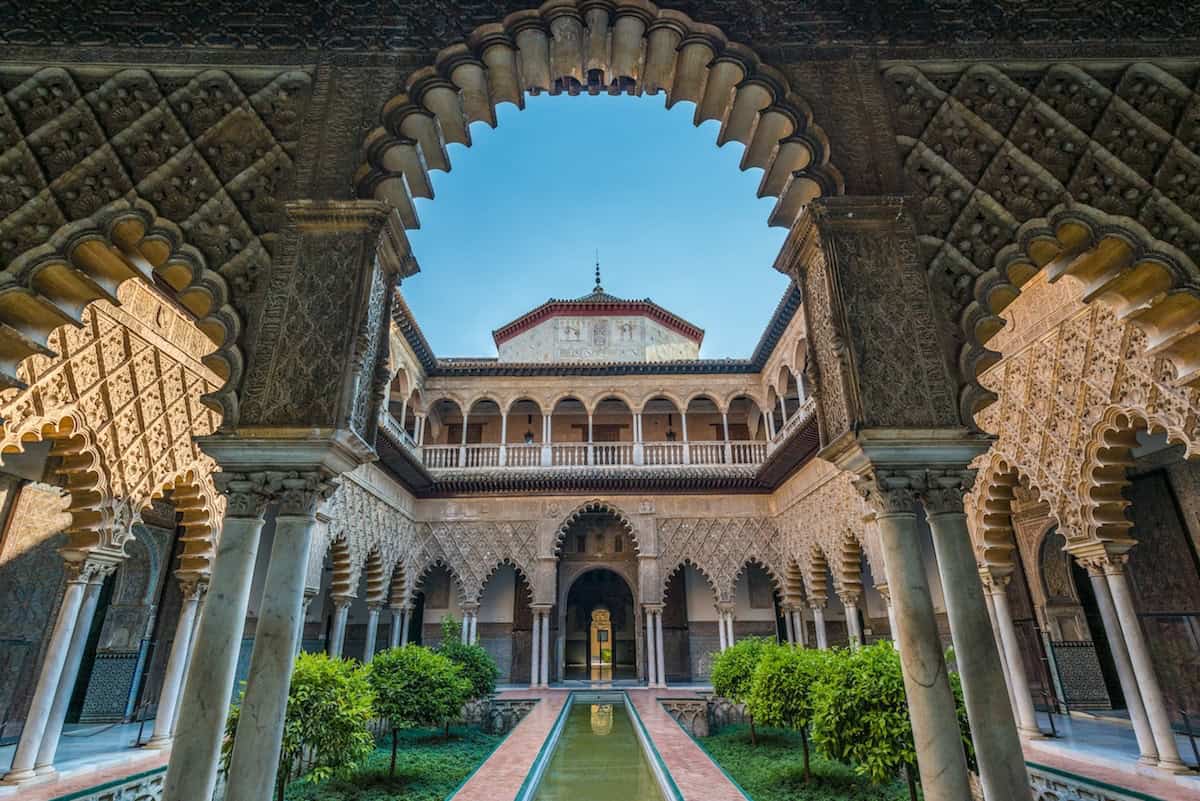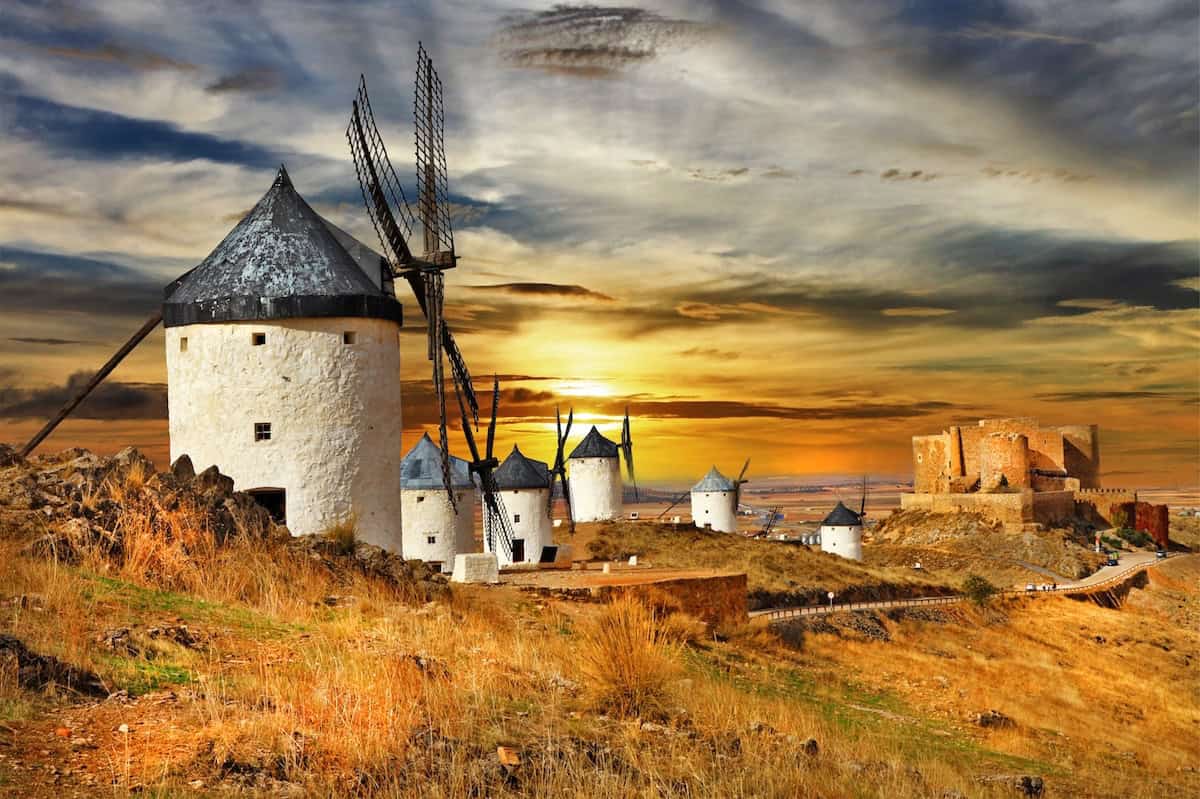In AD 711, an Islamic army from North Africa crossed the Strait of Gibraltar and began an invasion of the Iberian Peninsula. That conquest resulted in the creation of Al-Andalus, a domain of the vast Umayyad Caliphate. Though the last Moorish ruler was expelled from Granada by the Christian monarchs Isabella and Ferdinand in 1492, Spain still boasts many extraordinary Moorish monuments to explore…

Mezquita (Great Mosque), Córdoba
In 756, Córdoba came under the control of Abd ar-Rahman I, and it became the capital of Moorish Al-Andalus, rivalling Baghdad for its arts and culture. He also started construction of the Great Mosque (Mezquita) on the site of the former Cathedral of St Vincent in 784. This spectacular building, arguably the most beautiful Moorish mosque on the Iberian peninsula, incorporates material from earlier Roman and Visigothic ruins. Extended over a number of periods, the mosque has a forest of pillars in its airy, open interior – which also encompasses a Catholic cathedral built from the 16th century, three centuries after the Reconquest in 1236. A highlight is the Maqsura (the caliph’s private prayer area), decorated in flower motifs using vast quantities of golden mosaic cubes.

Alcazabar, Málaga
From the eighth century, Málaga was occupied by the Moors, when it was the main port for the province of Granada, and when construction of the mighty fortress and palace called the Alcazabar was begun. Most of the structure dates from the mid-11th century, though the site was earlier occupied by both the Phoenicians and the Romans, and there remains a considerable amount of Roman masonry in the walls. The city fell to the Catholics in 1487 after a long and violent siege, and the Alcazaba suffered badly during that clash, but was restored in the 1930s. Today, it consists of a series of terraced, fortified walls and fine gateways, laid out with gardens and running water in typical Moorish style. There’s an archaeological display of pottery and other finds. From the terraces of the main palace building there are fine views over the port and the city.
The Castillo Gibralfaro, literally ‘Lighthouse Hill’, is a ruined Moorish castle built by Yusef I of Granada in the early 14th century. It is linked to the Alcazaba below by parallel walls.

Mezquita del Cristo de la Luz, Toledo
A major Moorish centre following the Islamic conquest, Toledo once had 10 mosques – but nine of those were destroyed or repurposed after the city was taken by Alfonso VI of Castile in 1085, the first of the major cities of Al-Andalus to fall to the Christians. The Mezquita Bab-al-Mardum (Mosque at the al-Mardum Gate) was built c999, and though it’s small, and also despite the fact that it was made into the Christian Chapel of the Holy Cross in 1186, it still retains much of its beautiful decoration and fine Islamic architecture.

Giralda and Alcázar, Seville
After the Islamic invasion in 711, the town called Hispalis became Isbiliyya, from which Sevilla is derived. After the caliphate splintered in the 11th century and Córdoba lost its control of the Iberian peninsula, Seville became the most powerful city in Al-Andalus. Much of the city’s Moorish architectural heritage dates from the 12th century under the Almohad regime, or the Mudéjar style developed by Moors working under the Christian rulers after the city fell to the Reconquest in 1248. The Alcázar is a prime example of that blend: with horseshoe arches, stucco, calligraphy and coffered ceilings, it’s not a Moorish palace. It used to be, but little remains from that period; it owes its Moorish look to the Castillian kings who built it after the Reconquest: Alfonso X and his enlightened son Pedro I. As well as being a magnificent palace, the Alcázar was once a considerable fortress in this impressively fortified city, a fact easily appreciable as you pass through the chunky walls in the dramatic red Puerta del León entrance gate, named for the tiled king of beasts guarding it. The other major Moorish monument is the Giralda – originally the minaret of the mosque, now the cathedral’s bell tower, a magnificent piece of Almohad architecture built in the late-12th century, when it was one of the tallest buildings in the world. Although rebuilt by the Christians after its destruction in an earthquake, its emblematic exterior brick decoration is true to the original.

Alhambra, Granada
In the early 11th century, the Zirid rulers moved their town from nearby Elvira to Granada. The Nasrids, who ruled Granada until 1492, are responsible for most of the many buildings that form the Alhambra complex on the Sabika hill. The oldest part of the site is the Alcazaba, the fortress, which is impressive but decidedly functional, with none of the elaborate decoration seen elsewhere. It’s the Nasrid royal palace complex (Palacios Nazaríes) that inspires visitors with the most awe. Highlights include the Salón de Comares, constructed around 1370, its elegant wooden eaves adorned with amazingly intricate decoration, all of which was brightly coloured until as recently as the mid-19th century. Probably the most photographed area is the Patio de los Leones (Court of Lions). Framing the central fountain propped up by 12 lions is a fantasy of stonework. Two pavilions supported by the slenderest of columns and most delicate of arches face each other across the courtyard, the whole of which is framed by an elegant colonnade.
Abu `Abdallah Muhammad XII, known to the Castilians as Boabdil, was the final Nasrid ruler of the Emirate of Granada. After he surrendered the city and fortress to the Catholic Monarchs in 1492, new edifices were thrown up, including the bulky Renaissance Palacio de Carlos V. Incidentally, the name Alhambra is from the Arabic al-qalat al-hamra, meaning the red fort, perhaps from the colour of the sandstone, especially in the setting sun.











